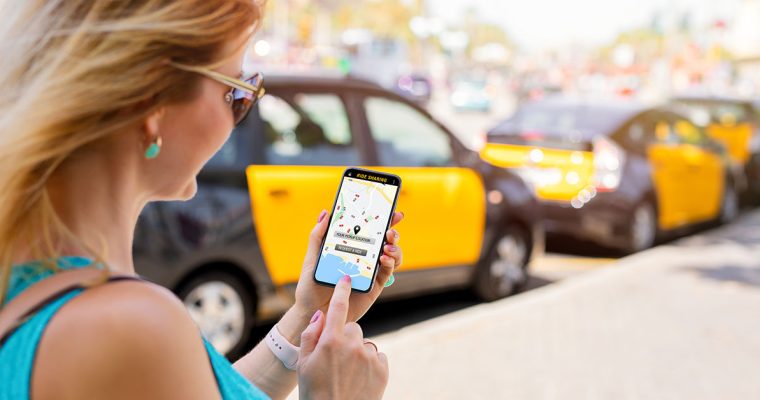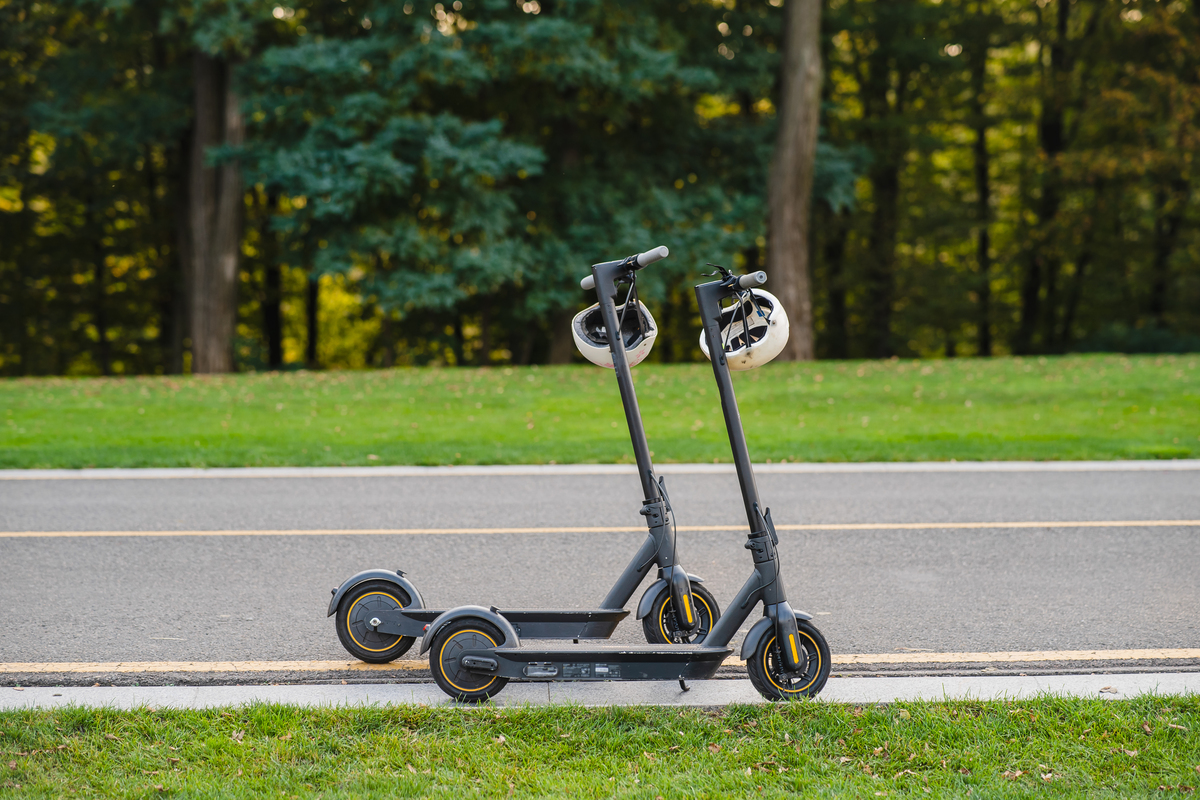
What’s all the fuss about shared mobility?
For your businessIf you think you’re hearing the term ‘shared mobility’ thrown around more often these days, you’re correct.
Increasing awareness about the negative impacts of vehicle emissions, traffic congestion, cost-of-living pressures, the proliferation of high-density developments… These are all contributing factors to the need for cheaper, more efficient, and faster transport alternatives.
And then there’s the propagation of companies such as Uber, Lime and Neuron (to name only a few) that are playing their part in ensuring the shared mobility market scales up at a rapid rate right around the globe.

So, what exactly is shared mobility?
Put simply, shared mobility is the communal use of various modes of transport in the form of bike sharing, ride sharing, car sharing, scooter sharing and other mobility options on a short-term basis. It makes it possible to get about towns and cities without having to own a car.
Unlike public transportation, shared mobility services are more likely to be owned by private companies (rather than government agencies), travel beyond set routes and/or timetables, and take payment on a subscription or membership basis.
In April 2023, research undertaken by McKinsey found the global micromobility market to be worth about $US180 billion ($NZ295 billion). They estimate that “[valuation] could more than double by 2030 to reach about $US440 billion ($NZ722 billion).”
In other words, shared mobility is big business.
In fully defining shared mobility, let’s break it down into three main groups: hailed mobility, shared micromobility and car sharing.

Hailed mobility
Hailed mobility isn’t exactly a new phenomenon; it’s been around for a while in the form of taxi cabs and limousine, or even chauffeur services. But digital technology has added a new dimension to hailing a ride home after a night out or organising a car to take you to and from the airport.
Hailed mobility falls into two groups: ride hailing and ride sharing. Many of us would be familiar with ride hailing, which is essentially arranging an accredited driver to take you from point A to B for a fee. Ride sharing, on the other hand, is slightly different; more like a carpooling and taxi service rolled into one. Riders share a vehicle, with that vehicle stopping along the way to pick up or drop off other passengers.

Ride hailing and ride sharing trips are almost exclusively arranged on smartphone apps, with payment for the service made by credit card on a use-by-use basis or through a subscription/membership fee. Where taxi fares are calculated by distance, or the time spent
in the cab during peak traffic times, ride hailing and sharing calculate the cost by a mix of distance and demand for the service at the time of your booking.
Globally, names like Uber and Lyft immediately spring to mind when thinking ‘hailed mobility’. While both services are available in Aotearoa New Zealand, Lyft is yet to have a presence in Australia. Other prominent hailed mobility services in both countries are DiDi (Aust), Ola (Aust/NZ), Shebah (Aust), GoCatch (Aust) and Waka Rider (NZ).

Shared micromobility
Shared micromobility refers to bike (electric and pedal-powered) and eScooter sharing services. Both types of mobility are hired through a digital platform – similar to ride hailing and ride sharing services – where users can pay per-use or get discounted rates if they take up a membership/subscription.
GPS tracking plays a major role in micromobility management. These location services help people find a bike or eScooter in their area, and it also enables providers to service their fleet when they’re not in use. Furthermore, GPS is deployed to make sure users adhere to regulations imposed on where they can be ridden across Aotearoa New Zealand
Prominent names in the micromobility space include Lime, Neuron and Beam.

Car sharing
Car sharing could also be called ‘short-term vehicle hire’ and broken down into two types: fleet-based car sharing and peer-to-peer car sharing.
With fleet-based car sharing, users access vehicles parked in specific zones across a range of locations in major cities, with the cost of hire calculated at an hourly rate. Access to fleet-based car sharing often requires a payment of a monthly subscription on top of the hourly rate.
The other type of car sharing is peer to-peer, where private owners list their vehicles online and make them available for short-term rental when not in use.
In Aotearoa New Zealand, car share users are more likely to be familiar with Cityhop, Mevo and, in the peer-to-peer space, My Car Your Rental. In Australia, prominent car sharing brands include GoGet, Popcar, Flexicar and Uber Carshare (following its acquisition of Car Next Door in 2022).

The downside of shared mobility
While there are many advantages to shared mobility, there are some drawbacks too. An analysis conducted by US-based management consultancy Oliver Wyman found evidence that shared mobility could be amplifying congestion and emissions in peak travel periods.
As the report’s authors noted, “Shared mobility has been blamed for contributing to congestion and emissions by adding more trips and vehicles to already congested roads. Safety concerns have been raised over eScooters, which pose accident risks for riders and pedestrians. Additionally, the platform economy has been criticised for poor working conditions and unfair competition with traditional modes of transport, such as taxis and mass transit.”
“As a result, cities such as London have cautiously renewed operating licenses for ride hailing companies and offered limited trials for rental eScooters. After a backlash, Paris banned eScooter rental services as of September 1 [2023].”
In a 2022 survey conducted by Software Advice, 45 per cent of respondents believed the quality of shared mobility services ‘is not always good’. Thirty-four per cent cited ‘unclear [procedures] for claims/issues’ as a drawback, and 33 per cent had concerns about the use of their personal data by shared mobility service providers.
Exploitation of workers (25 per cent), lack of qualified staff (22 per cent) and lack of regulations (20 percent) were also cited as reasons contributing to hesitations over using shared mobility on a more regular basis.

In conclusion
The popularity of shared mobility in Australia and Aotearoa New Zealand mirrors that of the rest of the world (i.e. increasingly so). For many people, particularly young urban-dwellers in both countries, ride-hailing and ride-sharing – along with eBikes, eScooters and car-sharing services – are emerging as the transport of choice rather than purchasing a car.
With the UN predicting that 68 percent of the world’s population will live in urban areas by 2050, shared mobility is sure to become entrenched in the world’s mobility mix, making it a phenomenon that HR professionals can’t ignore when considering how and why their employees are moving around to get to and from, and as part of, their jobs.
The rise of shared mobility may have its own problems, as with any new means of doing things, but there’s a general attitude that ‘caring is sharing’ and, consequently, shared mobility is both a practical and sustainable approach to transportation moving forward.
It’s time for the car as we once knew it to take a backseat.
Talk to SG Fleet about shared mobility today.
 Driving Insights
Driving Insights




